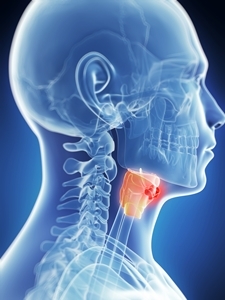Every travel nurse understands the importance of putting on sunscreen on a blistering hot day. But although head and neck cancers are about as common as melanoma, the most dangerous form of skin cancer, few Americans know about the signs and symptoms of these cancers, a new study found.
Senior author Dr. Benjamin Judson, from the Yale University School of Medicine, told Reuters Health that public awareness of these cancer is very low, which could prove harmful as they're not cognizant of the risk factors.
In addition, only about 1 in every 8 people know that some head and neck cancers can be tied to human papillomavirus. While the sexually transmitted infection is better known for triggering cervical cancer in women, it's also behind the increase in throat cancer prevalence, especially among men.
Where do head and neck cancers develop?
As those on medical staffing professions may share with their patients, head and neck cancers include cancer of the throat, mouth and tongue.
- Oral cavity: This includes the lips, front two-thirds of the tongue, gums, bottom of the mouth under the tongue, hard palate, and lining inside cheeks and lips.
- Pharynx: Any of the three parts of the pharynx may be exposed to cancer: nasopharynx, oropharynx and the hypopharynx.
- Nasal cavity: The hollow space inside the nose may be the starting point for cancerous cells.
Most head and neck cancers begin in the squamous cells the line the surfaces inside the head and neck. These cancers can also start in the salivary glands, although this is relatively uncommon.
Tobacco
Importantly, healthcare staffing professionals should advise patients that alcohol and tobacco use are big risk factors for these head and neck cancers, accounting for more than 75 percent of all cases in the U.S., according to the report published in Journal of American Medical Association, Otolaryngology – Head & Neck Surgery.
Symptoms
The symptoms of head and neck cancers include:
- lump or sore that does not heal
- difficulty swallowing
- change or hoarseness in the voice
Link to HPV
Although cancers have been dropping overall, research has shown that rates of throat cancer linked to HPV, which can spread through oral sex, tripled between 1988 and 2004. Less than 1 percent of the 2,126 adults surveyed on the online questionnaire identified HPV as a risk factor mouth and throat cancer, and only 15 percent of respondents with a college degree made the connection.
The Centers for Disease Control and Prevention wrote that HPV can trigger cancers in the back of the throat, most commonly in the base of the tongue and tonsils, in an area called the oropharynx. These cancers are called oropharyngeal cancers.
HPV causes cancer by changing normal cells in infected skin to abnormal cells. In most cases, the body fights off the HPV infection naturally and infected cells return to normal. However, in cases when the body does not combat this virus, HPV can provoke visible changes and specific types of HPV can lead to oropharyngeal cancer, which typically takes years to develop after initially getting an HPV infection.
Medical experts expect the annual number of HPV-positive throat cancers to exceed the annual number of cervical cancers by the year 200, according to a 2011 study in the Journal of Clinical Oncology.
In the U.S., about 3 percent of all cancers are head and neck cancers.
"Head and neck cancer is about as common as thyroid cancer and melanoma, but it causes more deaths than the two cancers combined," Judson told Reuters Health. "If people are aware of the risks and the signs and symptoms, they could be diagnosed earlier."

